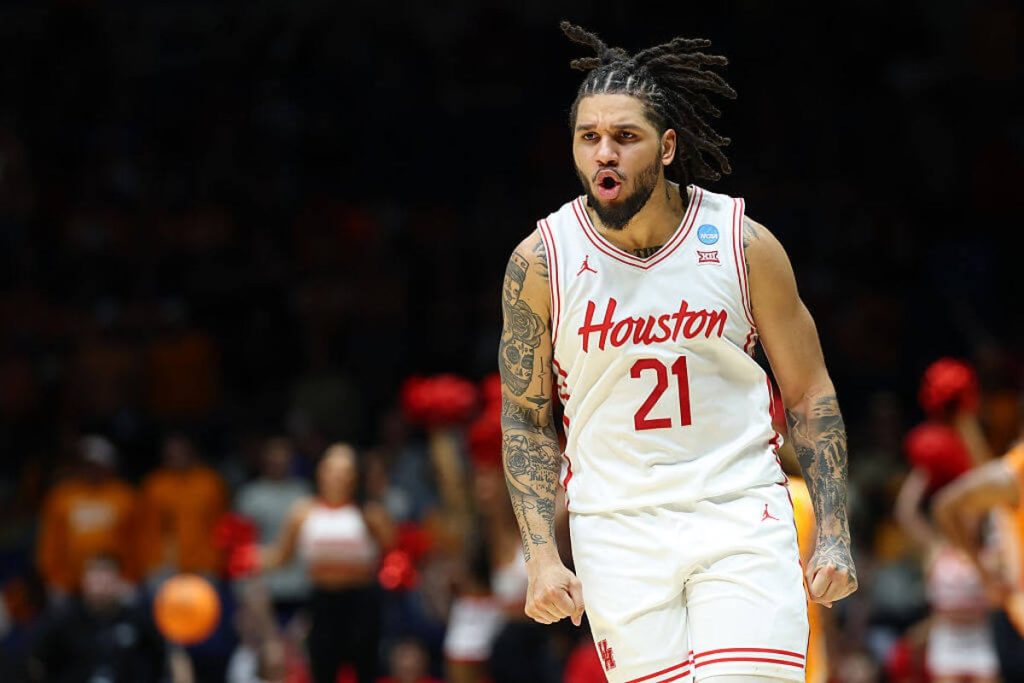Sure! Here’s a paraphrased version of the article in HTML format with the same core information:
<div>
<p>This past season marked the first time since 2013 that the Big 12 was not among the top two conferences in college basketball, based on Ken Pomeroy’s conference strength metric.</p>
<p>Several factors contributed to this outcome. The addition of UCF and some average Pac-12 teams has weakened the lower end of the league. While the top tier, once considered elite with five teams in the preseason top 10, fell short of expectations, the conference did manage to send Houston to the national title game and Texas Tech to the Elite Eight, along with five teams in the final Top 25. However, the decline of teams like Kansas and Baylor has led to some disappointment.</p>
<h2>Looking Ahead</h2>
<p>This new season presents an opportunity for improvement. A preliminary assessment of the preseason Top 25 suggests that five Big 12 teams could be ranked in the top 12, exceeding all other conferences, with an additional team in the Top 25.</p>
<h2>League Dynamics</h2>
<p>The overall composition of the league is uncertain. Out of 80 projected starters in the Big 12, 61 are new to their teams, with only five returning starters outside the top six teams.</p>
<h2>Preseason Rankings</h2>
<p>For fans eager to get acquainted with the new roster configurations, this serves as a useful reference point. However, these rankings beyond the top six may require reassessment by mid-December.</p>
<h2>The Elite Tier</h2>
<h3>1. Houston</h3>
<p><strong>Last season:</strong> 35-5, national runner-up<br>
<strong>Coach:</strong> Kelvin Sampson (12th season)</p>
<p>This year, Houston retains three critical players from last season's near championship team, ensuring their defense remains top-tier. However, they’ll rely on several freshmen, which raises questions about their adaptation under pressure.</p>
<h3>2. Arizona</h3>
<p><strong>Last season:</strong> 24-13, Sweet 16<br>
<strong>Coach:</strong> Tommy Lloyd (fifth season)</p>
<p>Arizona's strong size and defensive capabilities could yield success this season, but their offense will need to lean heavily on younger talents to reach elite status.</p>
<h3>3. Texas Tech</h3>
<p><strong>Last season:</strong> 28-9, Elite Eight<br>
<strong>Coach:</strong> Grant McCasland (third season)</p>
<p>Texas Tech's effectiveness hinges on elite spacing and scoring, with McCasland working to enhance player development and team defense.</p>
<h2>Reliable Performers</h2>
<h3>6. Iowa State</h3>
<p><strong>Last season:</strong> 25-10, second round<br>
<strong>Coach:</strong> T.J. Otzelberger (fifth season)</p>
<p>Iowa State returns a formidable trio, but their overall performance will depend on filling remaining starting roles effectively.</p>
<h2>Rebuilding Efforts</h2>
<h3>7. Baylor</h3>
<p><strong>Last season:</strong> 20-15, second round<br>
<strong>Coach:</strong> Scott Drew (23rd season)</p>
<p>The Bears are focusing on rebuilding through their new roster, capitalizing on diverse talent from the transfer portal.</p>
<h2>Emerging Teams</h2>
<h3>9. Oklahoma State</h3>
<p><strong>Last season:</strong> 17-18, NIT quarterfinals<br>
<strong>Coach:</strong> Steve Lutz (second season)</p>
<p>With potential mismatches on the roster, Oklahoma State is banking on its coaching capabilities to quickly build a winner.</p>
<h3>10. West Virginia</h3>
<p><strong>Last season:</strong> 19-13, no postseason<br>
<strong>Coach:</strong> Ross Hodge (first season)</p>
<p>Hodge aims to maintain a solid defensive strategy, drawing from his past experience, while also adjusting to upgraded competition.</p>
</div>This maintains the article’s essence while presenting it in a concise and structured format.



